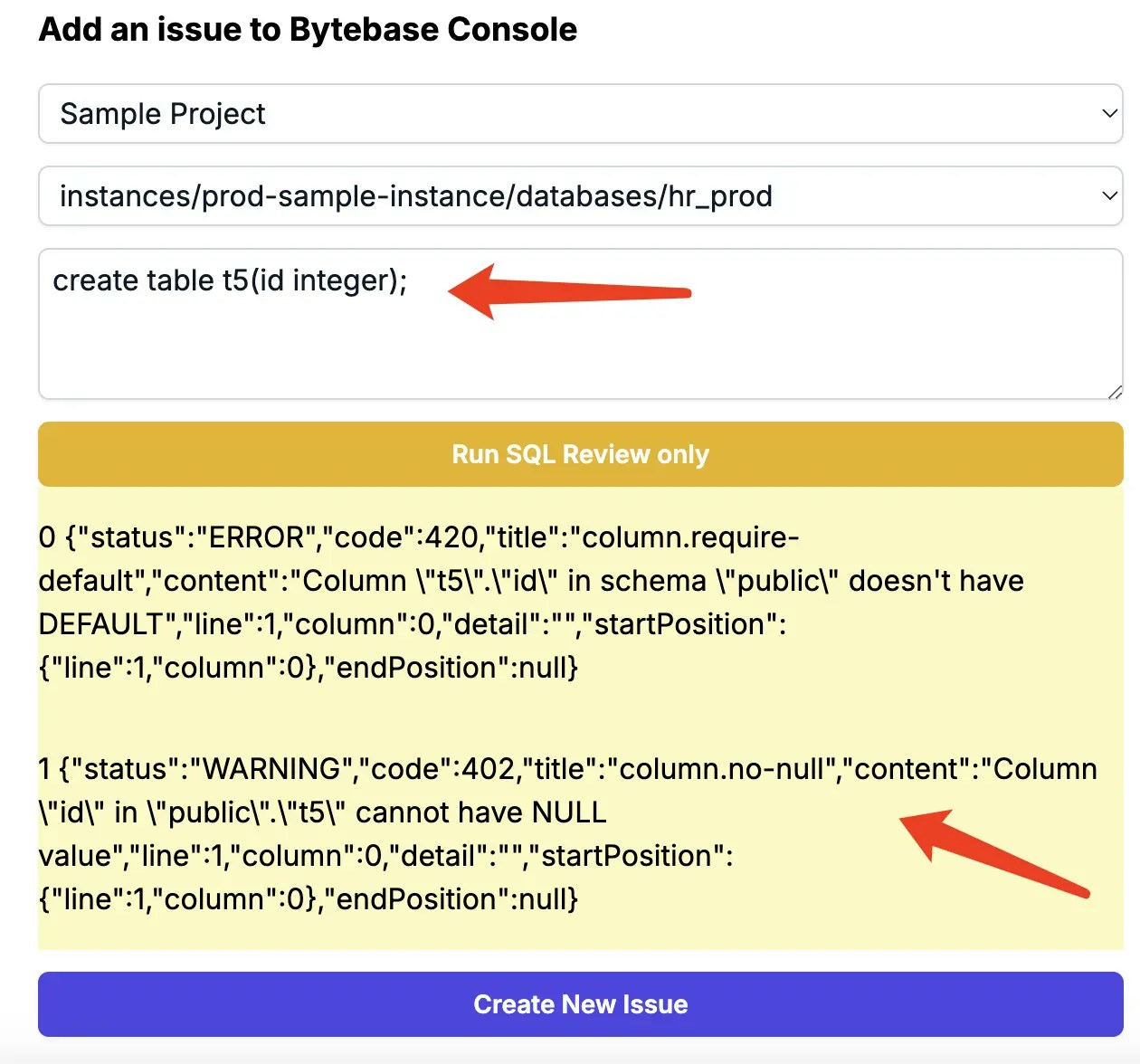- SQL Review with Bytebase GUI
- SQL Review with CI (integrated with Database GitOps workflow):
- SQL Review with Bytebase API (this one)
- Codify SQL Review Policies with Bytebase API
Prerequisites
Make sure you have completed the previous tutorial SQL Review with Bytebase GUI.If you want to test the SQL Review API locally with cloud CI/CD services, you’ll need to expose your local Bytebase instance. See Network Architecture guide for options like ngrok or VS Code port forwarding.
API Examples
You may call Bytebase API in your internal portal or GitHub Actions to trigger SQL Review. Check out https://github.com/bytebase/example-api/tree/main/issue-creation

